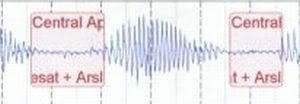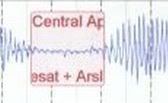Banned wrote:In the Adapt SV, an EEP of 10cmH2O is one heck of allot easier to exhale against than an EEP of 5cmH2O. EEP 5 would make me choke! Even on my old Vantage S8 it was easier to exhale against EPR 3 than it was EPR 1. Not that EEP equals EPR. Even with my ancient Respironics C-Flex wasn't C-Flex 3 easier to exhale against than C-Flex 1?
Banned, I wonder if you confusing EPR and C-flex settings' "degree" numbers with EEP "cm" numbers? In
EPR and C-Flex exhalation relief features, the higher setting numbers
do give less pressure when exhaling. So, no wonder you found it easier to exhale
WITH (not "against") your EPR pressure set for a higher SETTING number (more cms of drop in pressure) with the Vantage used in cpap mode.
But higher EEP setting numbers in an ASV do not mean more drop in pressure for exhaling. Higher EEP settings means MORE
cms of pressure blowing at you. More to have to exhale against.
With both EPR and C-Flex, a setting of
3 gives the "
most" drop in exhale pressure coming at you", 2 gives "less drop", and 1 gives the "least" drop in exhale pressure.
It's almost like you're looking at the ASV's EEP pressure setting the same way...thinking that a higher EEP setting number means more drop, more pressure relief, for exhaling. But it doesn't.
"EPR 3" is a setting. EPR (Expiratory Pressure Relief) set at "3" drops the pressure 3 cms when a person exhales when using a resmed cpap machine or using a resmed autopap in cpap mode.
C-Flex 3" is a setting. C-Flex set at 3 gives the most drop in pressure C-flex is capable of, when a person starts to exhale, using a Respironics cpap or autopap. With C-flex, a setting of "3" doesn't drop the pressure an exact number of cms. It doesn't mean the pressure whill drop 3 cms when you start to exhale.
How much C-Flex (at any C-Flex setting) will drop the pressure is very dependent on how forceful the beginning of a person's exhalation is.
With both of those features (EPR and C-flex) the higher setting number means "more drop" in pressure. The degree of drop in pressure. The
higher the number for those settings, yes...the
more drop in pressure when you exhale.
But the EPAP setting in bilevel machines and the EEP setting in the ASV machine is stating
specific cm's of pressure that will be blowing at you when you exhale.
A Higher EEP number does not mean more drop in pressure. EEP is stating how many cms pressure will blow
at you when you exhale.
If EEP or EPAP (EEP in the ASV machine; EPAP in a bilevel machine) is set at 10
cm, you're going to have 10 cms of pressure blowing at you when you exhale.
If EEP or EPAP (in the respective machines) is set at 5
cm, you're going to have 5 cms of pressure blowing at you when you exhale.
As for your feeling that you breathe more comfortably with your ASV set for EEP 9 or 10: Perhaps it's that you absolutely need 9 or 10 cms of pressure to keep your throat open "enough" during exhaling so that you can even BEGIN to draw in a new breath when you start to inhale again. If a pressure of only 5 (EEP set at 5) allows your throat to collapse after you've finished exhaling, and didn't allow you to even begin to inhale again, certainly you'd breathe easier with EEP set at 9 or 10. That seems to be the case for you. Would be for me, too.
However, that
doesn't mean (as you seem to have been saying) that an EEP setting of 10 means LESS pressure to exhale
against than an EEP setting of of 5.
The
lower the EEP setting, the
less cms of pressure blowing at you when you are exhaling.
At least, that's the way I understand "EEP" (and "EPAP") settings.

